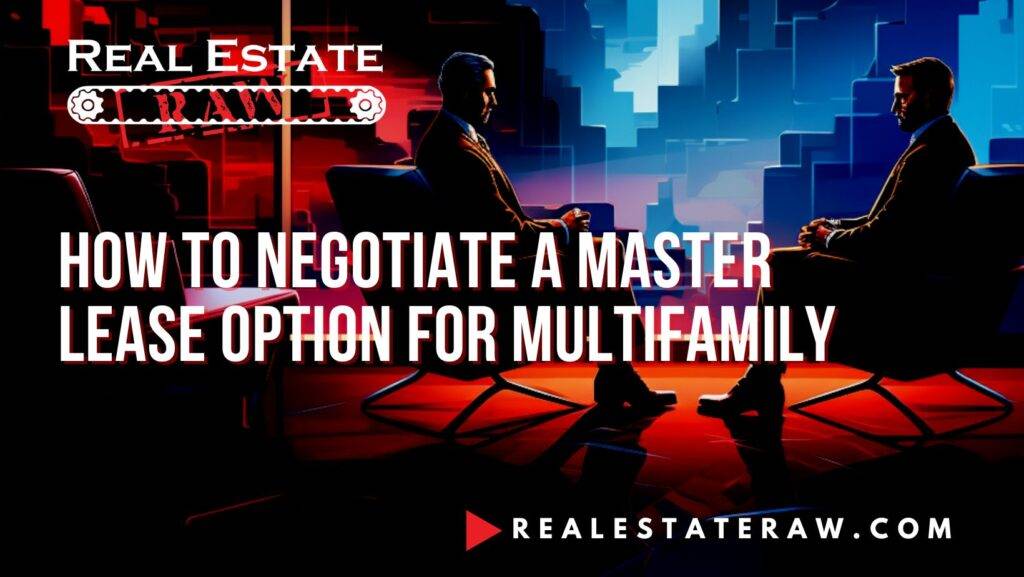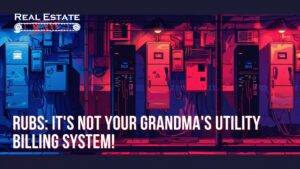Negotiating a master lease option for multifamily begins long before the offer is made. All good negotiations begin with gathering information, and it’s no different with this type of financing. The first bit of information that you gather will help you to determine the motivation of the seller. If a property is a distressed asset (low occupancy, deferred maintenance, etc.), the seller is more likely to be motivated to sell the property. If a property is a money maker, the seller is less likely to be motivated to sell.
Not all motivated sellers are motivated because the property is not making money, but most are. Take a close look at the property itself. If you find, in your first analysis, that the property is distressed or that the seller is motivated for other reasons, then this is a prime situation for a multifamily master lease option offer. As I stated in the realtor section, do not approach a seller or agent, and directly ask for any type of creative financing. This can make you seem like you don’t have any money.
A good negotiation will be based on your ability to make the seller see the big picture. You will need to make the seller aware that they have a problem without rubbing their nose in it. The way to do this is to create an objective situation with which to leverage your position. You will do this with your analysis of the deal. Gather all the financial data you can and calculate the cash flow or lack thereof. Gather all the data you can about the repairs needed for the property, including the approximate cost of repairs. Calculate the value of the deal using the income approach.
You want to understand the value of a deal and be able to gently educate your seller on the value. Most sellers have an unrealistic view of their property’s worth. Your job will be to bring their value back in line with reality and, at the same time, get them to realize that the multifamily master lease option is the solution to the problem.
Once you calculate the property’s value, you now have its worth that you have derived through logic and through the property’s income. Your offer and valuation will be based on numbers that are logical and explainable. Otherwise, your seller may feel that you are making a low-ball offer just to steal a deal. Once you have an objective value for the property, you need to make the seller aware of a few things.
- The lack of cash flow will not allow the property to qualify for a bank loan.
- If the property will not qualify for a bank loan, then the seller is looking for an all-cash offer.
- If the seller gets a cash offer, it is highly likely to be about half of what the asking price is because it’s all cash.
- If a buyer (besides you) were to come to this market with cash, would they buy something distressed or will they leverage their money and get something currently operational? Make the seller realize that all sellers will approach the asset the same way you do.
You also need the seller to understand that you did not create this problem, but you are willing to help them solve it. This is where the offer for a master lease option comes in. You can gently make the seller realize the magnitude of the situation and then suggest the master lease as a possible solution to the deal. This takes time, but if you don’t spend the time to get your seller to this point, your master lease option offer may be misunderstood. Remember: A confused mind says no.
Now you must put on your sales hat and get ready to sell! At this point, all you are selling is yourself. You will need to convince the seller that the master lease option is a way to solve their problems and you are the person for that job. Also keep in mind that sellers may not admit that they do not know how this type of financing would work. If you think they do not, then your job will be to explain how it works and what’s in it for them. The last part being the most important.
Negotiating is an art that takes time and practice. Start practicing now!
Not everyone knows when they do or do not have a problem. This is never truer than in real estate. Sometimes owners have no idea how distressed their asset really is or how overpriced it may be. It is your job, through the negotiation process, to identify the issues with any asset and to strategically bring this up with the seller. Just because the seller does not realize they have a problem, does not mean they don’t have a problem. It just means they will act like they don’t.
Use the negotiation process to identify the seller’s motivations and to offer equitable solutions. If a seller does not feel that they are getting a fair deal, they might not move forward with you.
Do not replace creativity with compromise. Instead of creating an offer that creates a mid-level compromise, think creatively to make an offer that gets each side more than they expected. That’s a great negotiation.
For more information on how to use multifamily master lease options, go to my site www.realestateraw.com.
Best of luck!
Bill Ham


































